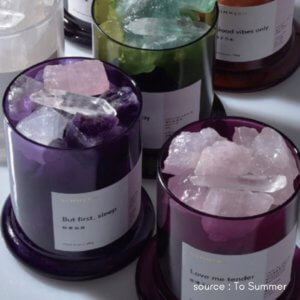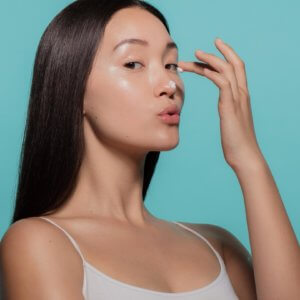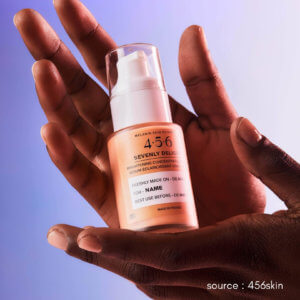
Oriental Aromatherapy
Aromatherapy is a trend to watch for the coming years in Asia as it will surely keep on growing and is in synch with many local aspirations of consumers.

According to the latest “2021 Aromatherapy Consumption Trend White Paper” statistics released by CBNData, in recent years, the number of aromatherapy consumers has continued to expand, and the compound growth rate of purchasers is almost 1.4 times that of skincare. Other data show that China’s fragrance industry is developing rapidly, increasing at an annual rate of 20%-30%, and the market size will exceed 70 billion yuan in 2021.
Anxious climate
Several reasons can explain this rapid growth and one of them is the pursuit of physical and mental health. Consumers are looking for ways to reduce stress and anxiety in their everyday life and this can be done through various methods, mainly wellness ones like alternative medicine and therapies but also products. Creating a safer, more grounded and balanced environment is a way for many to have an impact on their wellbeing. Aromatherapy products in home decor and fragrance, are a great way to enhance wellbeing. For instance, Chinese consumers love To Summer, a domestic home fragrance brand, that rose to popularity with candles, scented crystals and sticks.
Ingredients trust and potency
In skincare, aromatherapy also plays an important role and numerous brands have looked into traditional medicine (usually rooted in local practices : Chinese, Korean and so on) and use the numerous benefits of Asian plants in beauty products. Ingredients from traditional medicine, like Ginseng, Shiso, Mugworth are well-known by consumers for their healing properties. Many Asian brands use these herbs, plants and spices filled with many properties as the main ingredients to their lines and promise to bring benefits to the skin but also the mind and to improve overall well-being, just like Thai brand Thann that selects only natural ingredients.
Local pride
Originating from local practices, aromatherapy is bringing to light the heritage and legacy of each country its stems from. As Asian consumers (especially among Gen Z) are experiencing a growing national pride sentiment and love nothing more that to see the Oriental philosophy, aesthetics and concepts into product development, distinctive aromatherapy brands are gaining popularity. Korean brand Beauty of Joseon uses Oriental herbs to create skin care for women in their 20s to 40s and take inspiration from a 19th century encyclopedia describing the skin care secrets of upper class Korean women.
Aromatherapy is a trend to watch for the coming years in Asia as it will surely keep on growing and is in synch with many local aspirations of consumers.
Monia MERABET

Aromatherapy is a trend to watch for the coming years in Asia as it will surely keep on growing and is in synch with many local aspirations of consumers.

The pandemic and climate crisis have made consumers more aware than ever of the relation between their surroundings and the environment they live in and the overall health of their skin.

Luxury houses keep on looking for new ways to reinvent themselves and stay attractive in a very competitive industry. Consumers are always expecting new, innovative products or campaign and major brands are very prolific in the area.

Inclusivity has been a key concern for many people over the last few years. In the beauty industry it has impacted product development but also organizational structures.